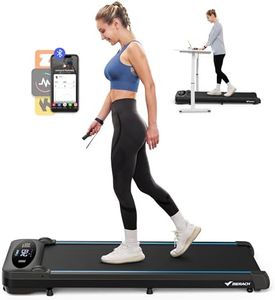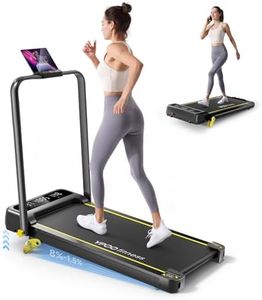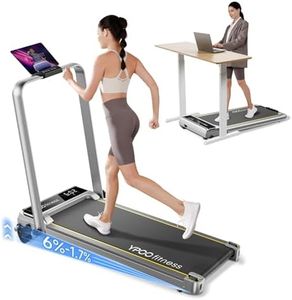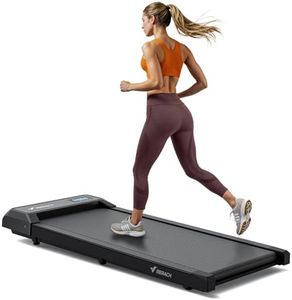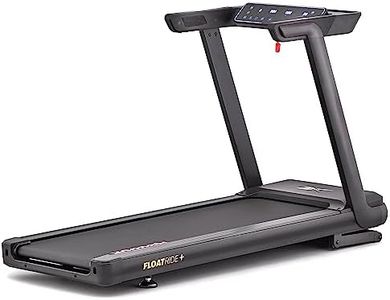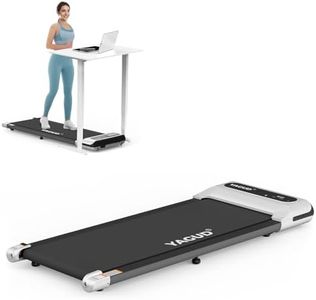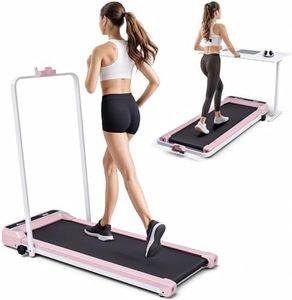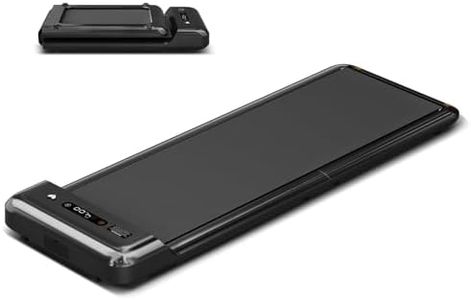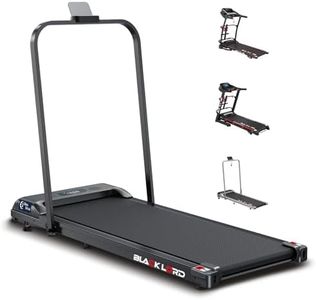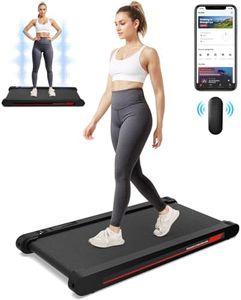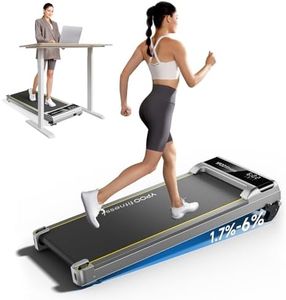We Use CookiesWe use cookies to enhance the security, performance,
functionality and for analytical and promotional activities. By continuing to browse this site you
are agreeing to our privacy policy
10 Best Mini Treadmills
From leading brands and best sellers available on the web.Buying Guide for the Best Mini Treadmills
Choosing a mini-treadmill is a practical way to bring more movement into your daily life, especially if you have limited space at home or at the office. Before you start, think about how you plan to use the treadmill: Will it be for walking while working at a desk, light jogging, or occasional runs? Remember, a mini-treadmill typically sacrifices some features found in larger models to keep things compact and portable. Pay attention to the main features that will impact your comfort, ease of use, and safety.Size and FoldabilitySize refers to the treadmill’s overall dimensions, both when in use and when folded for storage. Foldability describes how easily you can reduce its size to put it away after your workout. If you have limited space, a more compact, easily foldable treadmill means you can store it under a bed or in a closet. Larger treadmills may offer more running space, but will take up more room. Choose based on your available room and how often you plan to move or store the treadmill.
Belt SizeBelt size is the length and width of the area where you walk or run. A longer, wider belt offers more space and is more comfortable for jogging or if you have longer legs, while a shorter, narrower belt may be fine for slow walking and saves space. If you mainly walk or have a shorter stride, a smaller belt will be sufficient, but for running or a more comfortable experience, look for a larger belt.
Motor PowerMotor power, often measured in horsepower (HP), affects the treadmill’s smoothness and its ability to support different speeds or user weights. A lower-powered motor is enough for gentle walking, while a stronger motor is needed for running or heavier users. If you plan to only walk, a small motor will suffice; for jogging or if multiple family members will use it, a higher-powered motor may be better.
Weight CapacityWeight capacity is the maximum weight the treadmill can handle safely. Exceeding this limit can damage the treadmill and be unsafe for users. Always check this before purchasing, and choose a treadmill with a capacity comfortably above your weight to ensure durability and safety.
Speed RangeThe speed range tells you how slow or fast the treadmill can go. If you only want to walk, lower maximum speeds are fine, but if you want to jog or run, look for a treadmill with a higher top speed. Base your choice on the type of exercise you plan to do most often.
Noise LevelNoise level refers to how loud the treadmill is when in use. Quieter models are better for shared spaces, apartments, or if you plan to use it while watching TV or working. If noise is a concern, look for models that are advertised as quiet or check for user feedback on how loud they are.
Display and ControlsThe display and controls are how you interact with the treadmill—setting speed, tracking time, and checking distance. Simpler models may just have basic buttons and a minimal screen, while others may have touch displays and more stats. Pick a model with controls that are easy for you to use and display the information you care about (like step count, calories burned, or distance).
